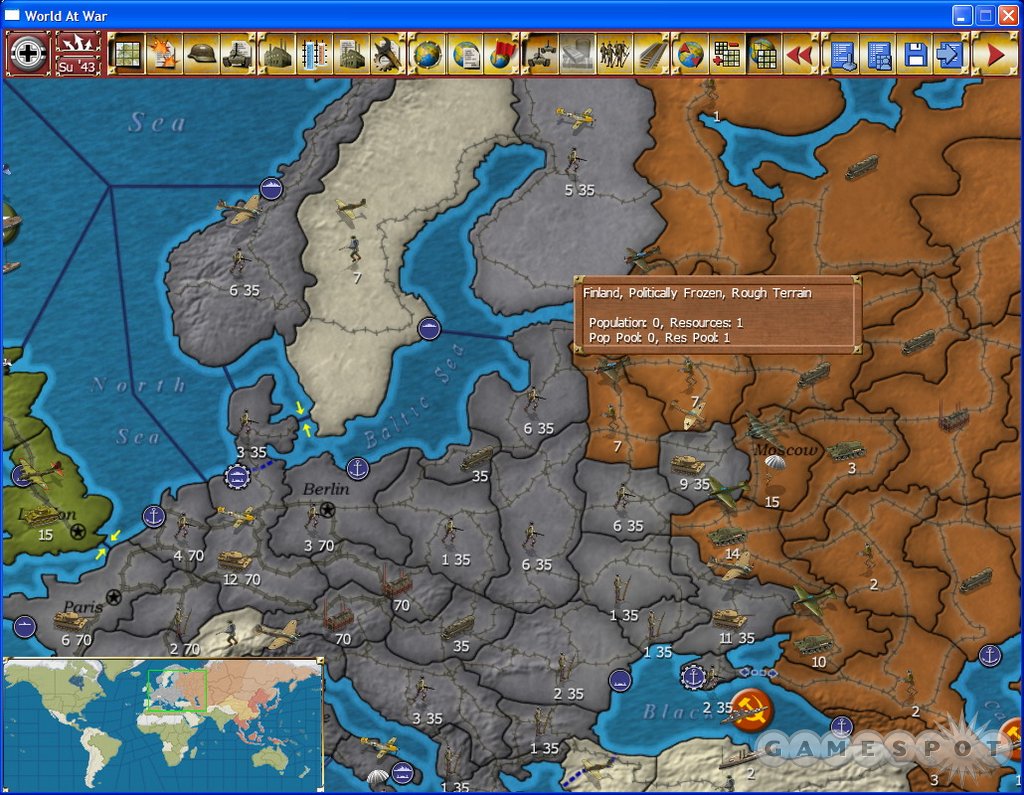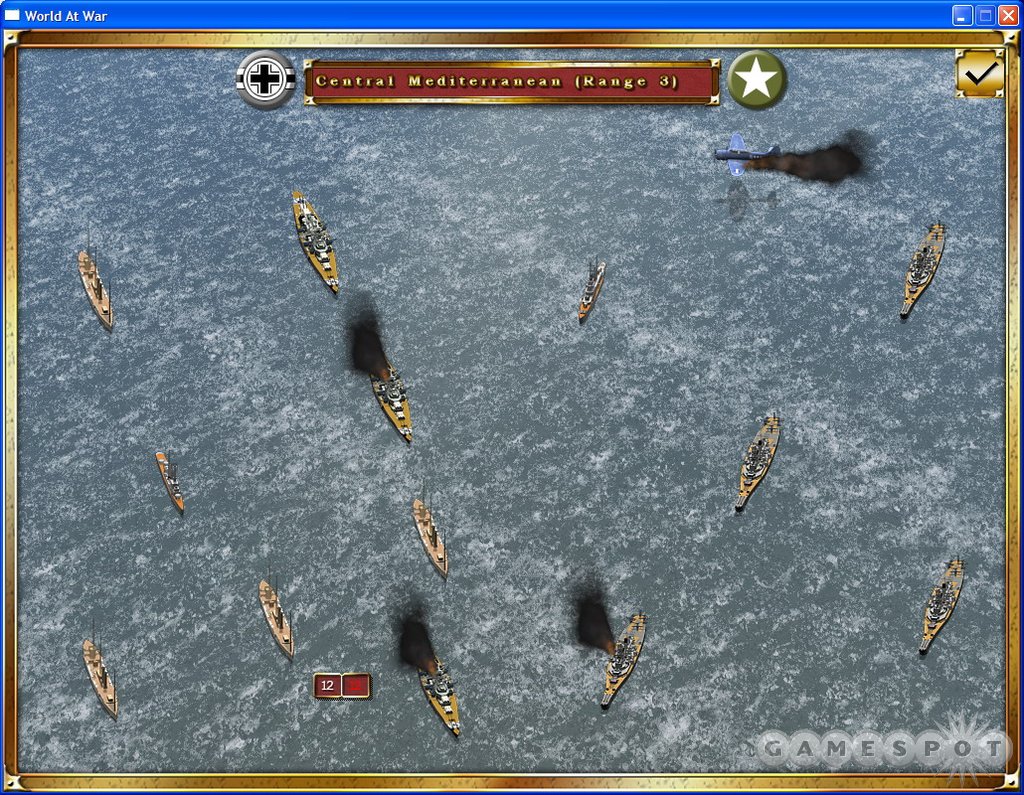Don't let the screenshots from Gary Grigsby's World at War fool you. It may cover World War II at a strategic level, but this isn't Axis & Allies. Success in this game requires managing everything from research and supplies to politics and production, with loads of epic battles simply punctuating long hours of logistical planning.

At the start of the game you take control of one of the five available world powers: China, Germany (and its allies), Japan, Russia, and the Western Alliance (composed of the US, the UK, Canada, France, and other historical allies). Beginners can focus on combat by leaving production chores up to the AI, but it is also possible to assume complete control over every aspect of the game. Several campaigns are available, including one that covers the entire war, and play by e-mail is supported if you want to face off against some friends or play cooperatively against the AI.
The world map is divided into countries and regions that all conform to their political stances during the war, so knowing a little bit about history helps immensely while playing. For example, when beginning a campaign in the spring of 1940, Russia is politically frozen, and unless provoked (or the German player leaves his eastern border exposed), that power won't enter the conflict until the winter of 1943, when it joins with the Western Alliance, regardless of whatever else is going on. Similarly, if Japan fails to maintain a proper garrison in Manchuria, Russia will automatically unfreeze its eastern zone and seize the opportunity to take territory. There are many frozen regions and many conditions that will trigger their full-fledged entry into the conflict, so there is a lot of political strategy to consider that also plagued historical figures.
Basic gameplay consists of researching new technology, producing units and supplies, and moving those assets around the map to fight the enemy. Within each of those broad categories there are many things to consider, including what upgrades to focus on for a variety of unit types, how many of each type of unit to produce, and what type of movement is required to get all of those assets where you need them. Rail networks, trucks, planes, and transport ships all provide the means to perform "strategic" movement, where units are not forced to move under their own power and can therefore travel over longer distances than is possible with their inherent "automatic" movement. Moving units under their own power consumes supply points, but many times is unavoidable, while using strategic movement doesn't consume any supply points. This makes it very important to produce and maintain transportation assets and also to protect vital rail lines and sea lanes.
Combat is complicated by the sheer number of unit types that are available and all of the modifiers that affect the behind-the-scenes dice rolls that are used to determine hits and misses, but a combat-analyzer tooltip pops up when you mouse over a region to provide a quick overview of the odds. While battles are obviously important, they require little thought compared to the means it takes to prepare for them. Knowing the capabilities of your units and those of the enemy is extremely helpful, but unless you have the production, transportation, and supply capacity to bring your forces to bear, all of those facts are meaningless. This game is all about long-term planning, and it is telling that there are tutorials focusing on movement and production but not on combat.
While some may feel that the game buries them in minutiae, it actually does a fairly elegant job of re-creating many of the strategic nuances of the war that other games either fail to cover or model in too much detail. The English Channel, for example, is modeled as a "narrow" in the game so that ground artillery and air units stationed on either side can automatically bombard anything that tries to pass through. Many ocean regions are much larger in reality than would fit neatly on the map, so they are marked with double lines to show that they cost twice as many movement points to traverse than other regions do. If the Germans take Paris, most remaining French regions immediately switch to German control under the Vichy government, and a little video clip even pops up to mark the occasion. There are many simple and intuitive additions like this that add a lot to the historical flavor of the game without being needlessly complicated.
Playing with others offers the best challenge, but the AI is no slouch. It exploited practically every opening we gave it and always kept us on our toes. There are several difficulty levels to choose from, but they simply give or take away transportation and combat advantages. That's good, because you know the AI will always fight smartly on the lowest level of difficulty, just not as effectively as it does on the harder levels.
World at War looks terrific by wargame standards, but it suffers from a cluttered interface and a low fixed resolution of 1024x768. Battles look cheesy, with a bunch of units that aren't to scale trading shots on generic backgrounds, but this is the type of game where you turn off the battle animations after a few fights so you can quickly see the outcome and get back to strategizing. The in-game music is decent but repetitive (and can be turned off), and the sound effects do their job of alerting you to what's going on in the game.

Those looking for a simple strategic-level World War II game should pass on this one, as there is far more to the game than simply slugging it out to change ownership of the various regions. You have to keep track of the supplies required to maintain an offensive and be very selective about the types of research that will be most beneficial to your overall strategy. You have to know your units (and the enemy's) well enough to tell at a glance whether an attack can be successful, and when preparing for an offensive you must know exactly how many units you can commit from other areas without destabilizing the regions they were in or opening yourself up to attack. Above all, especially when playing as the Germans, you must be ever-mindful of politically frozen regions and powers entering the war and maintain the means to deal with them. Newcomers to this genre will simply be overwhelmed by the amount of data this game throws at them, while students of the conflict will revel in the detail. World at War isn't for everyone, but if you're willing to come to grips with the interface and come in armed with some knowledge (or the will to learn), it provides a very rewarding way to relive WWII from the perspective of its top leaders.